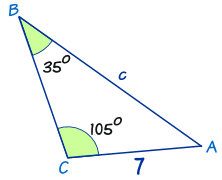À la fin de la journée, je suis contente avec mon jeu et qu’est-ce que ma groupe a accompli. Je pense qu’on a vraiment produit un jeu amusant et intéressant avec qui les gens pourraient s’amuser. Bien que l’apparence n’est pas qu’est-ce que j’ai imaginé, j’aime notre produit final et comment on a un thème pour tous les cartes et la boite. C’était un peu difficile de travailler en groupe avec tout le monde parce que nos horaires étaient vraiment remplis pendant les derniers quelques semaines. Aussi, je pense qu’on était un peu an arrière de tout le monde d’autre parce qu’un de notre membre de groupe n’était pas ici pour 2 semaines. Mais, on a travaillé ensemble avec le temps qu’on avait et on a fait ce qu’on a dû faire. Cette type de projet n’est pas ma force, mais je pense que c’est important d’avoir les expériences dans la vie comme ça. Mon défi personnel était simplement que j’ai stressé trop parce que je voulais que tous était parfaite et j’ai comparé notre projet aux autres. Pour conclure, j’aime bien notre jeu et je suis fière de notre creativité pour le créer
Category Archives: Grade 11
Peer Tutoring Discussion – Molly, Ximena and Brooke
Jouons un jeu: Journal #3
 Loading...
Loading...
Technology paragraph
As a society in this day and age, we are not too dependent on technology because of the fact that we could simply live without it. Humans can agree that we do use a lot of technology in our day to day lives, but it is not the same thing as being reliant on it. As times have progressed, humans have as well – evolving and growing. A part of this evolution is creating technology, which is continually being produced to better the lives of millions. From medical advancements, to more interactive learning in classrooms, to benefitting a normal workplace, and connecting people all around the globe. We are adapting with the times. At the same time, if humans were stripped away from all technology we would not immediately die. If we look back to as little as 50 years ago where little to no common technology existed, we still thrived as a human race. We are not too reliant on technology, we use it to our advantage and reap its benefits, while still appreciating and utilizing our human qualities.
Week 17 – Math 11
This week in pre-calc 11, we learned all about the sine and cosine law; two very important facts to know when doing trigonometry, especially with non-right triangles that we can’t use SOH CAH TOA with.
Sine law:
We use sine law to find either a missing angle or a missing side.
To understand the formula, we must understand that a triangle has 3 sides and 3 angles. The side of an angle is it’s opposite. With this triangle, we can see that the side labeled c is opposite to the angle C. 
To find a missing angle, we use the formula:
To find a missing side, we use the formula:
We use the sine law when we are trying to figure out an unknown angle or side and the given triangle shows you (or lets you figure out) the information of an angle AND its opposite side.

triangle 1
For an example, we can use this triangle 1 asking us to find side c.
First step would be to determine which formula to use. Since we are missing a side, we will be using .
Next, we would plug in the numbers that we know into the formula:
Since we only really need one equal sign in our equation we can eliminate one part of the formula that we don’t need since it doesn’t give us any useful information. In this example, we could eliminate
The next step is find c with some basic algebra and some calculations.
To isolate c, we would multiply both sides by
Using a calculators, we can find that
Math 11 Week #14
This week in pre-calc we started our new unit with rational expressions. In 7.2, we learned all about multiplying these rational expressions. It is very similar to just multiplying regular fractions where you simplify as much as you can, and then solve the question. For example:
Just to start, you can see that the 8 on the bottom can cancel out with the 16 on top, turning the 8 into a 1 and the 16 into a 2. You would continue doing this until you can’t anymore.
With this equation, to make it easier, you would try and simplify the most you can with the numerators and denominators. After simplifying, you would end up with a way easier equation to solve:
Now with expressions with variables, it is very similar. With that though, there are restrictions. The denominator of an expression can never equal 0, so before solving, you must state the non-permissible variables.
For example with the expression:
The first step is to state the non-permissible values and make sure the denominator ≠ 0. To do this you might need to factor out the denominator:
8x+16
8(x+2)
x≠-2
(x-5)(x+5)
x≠ 5, -5
Non-permissible values : x≠ 5, -5, 0
Next we need to factor out the entire expression:
Next we can cancel out all of the equivalent values, such as (x+5) in the denominator and (x+5) in the numerator.
Then simplify even more, since 2 can factor into 8.
Now we solve and find our final answer because we can’t simplify the expression anymore:
If we have a dividing question, all we do is flip the second expression and then treat is as a multiplication question – so we don’t really ever divide.